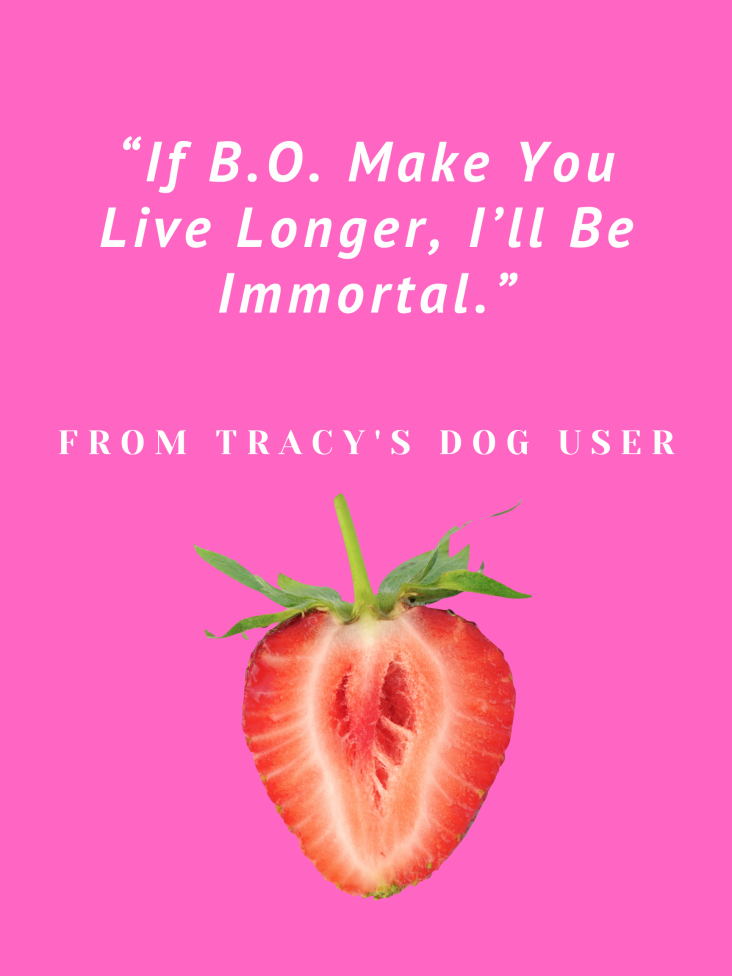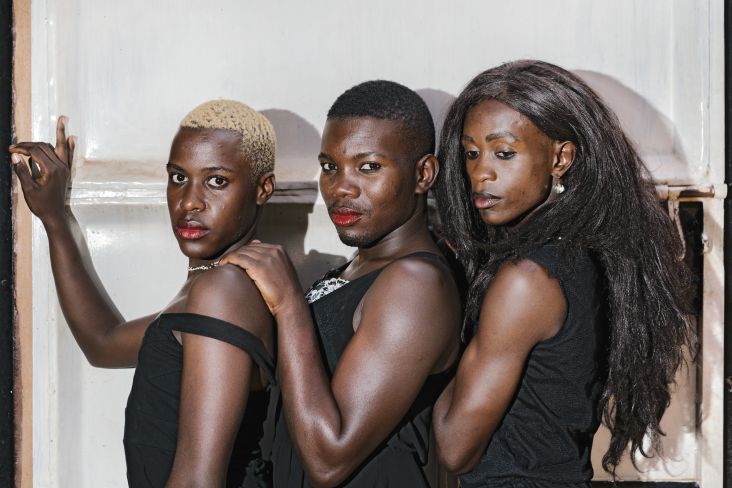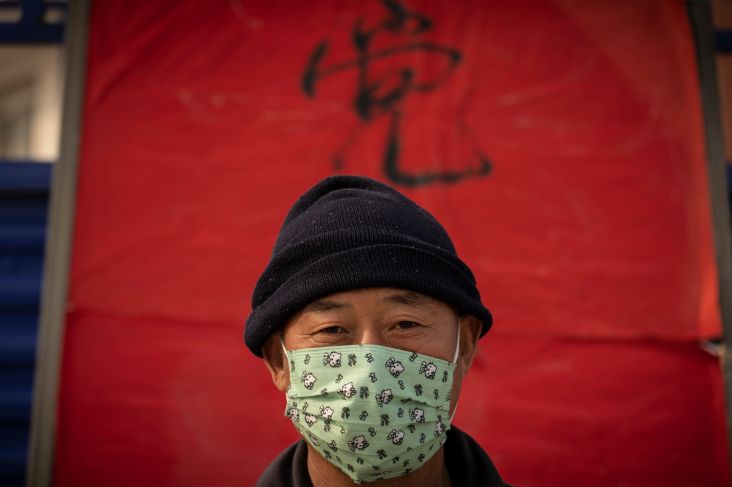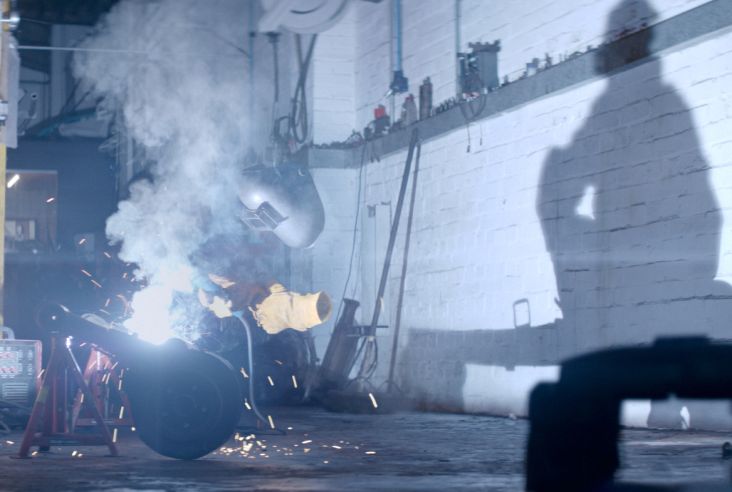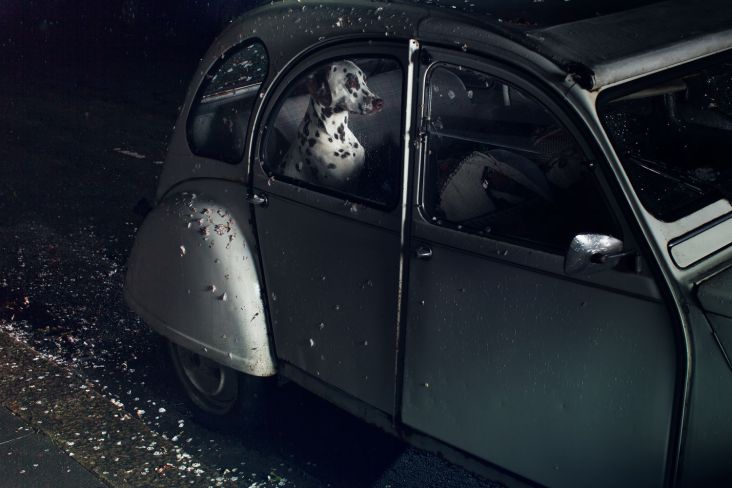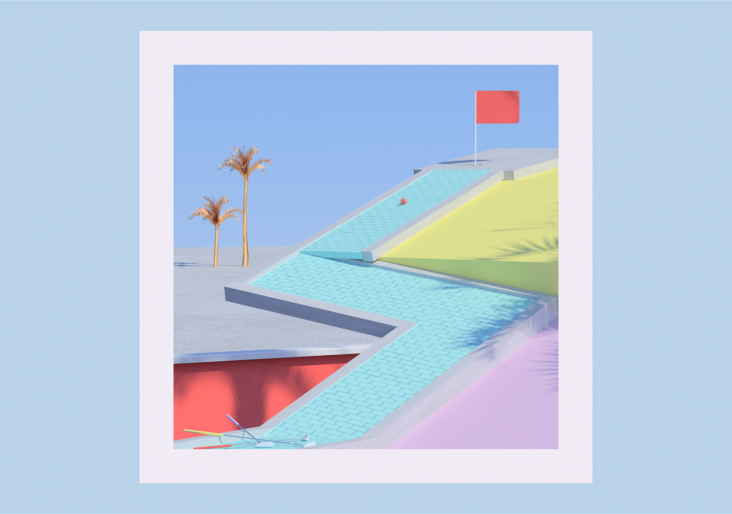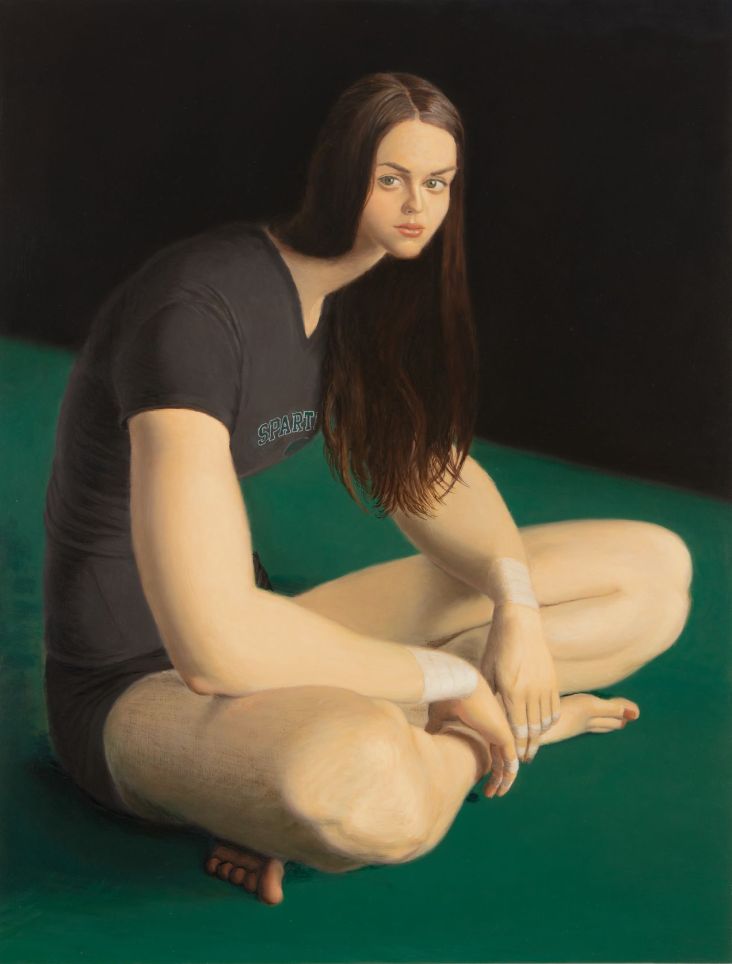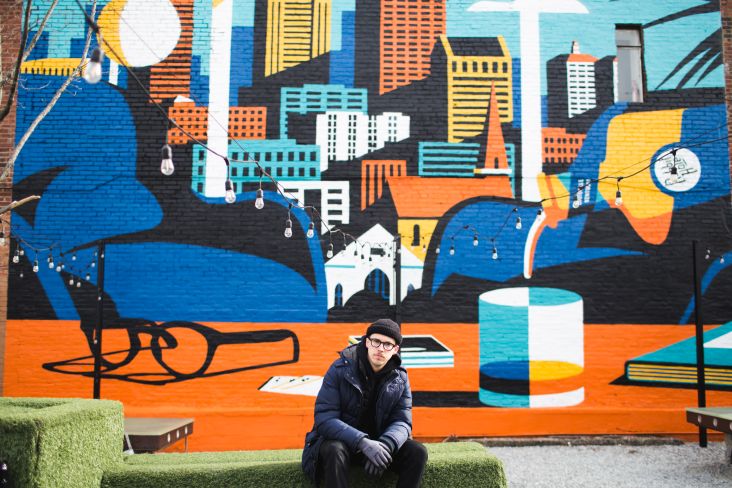Lana Belton, Madeleine Berg, and Emma Skaaning on starting their own design studio in Berlin
When friends Lana Belton (Canada), Madeleine Berg (Sweden) and Emma Skaaning (Denmark) graduated from university, they didn't try to find jobs at Berlin's many reputable design agencies; they instead set up their own studio.
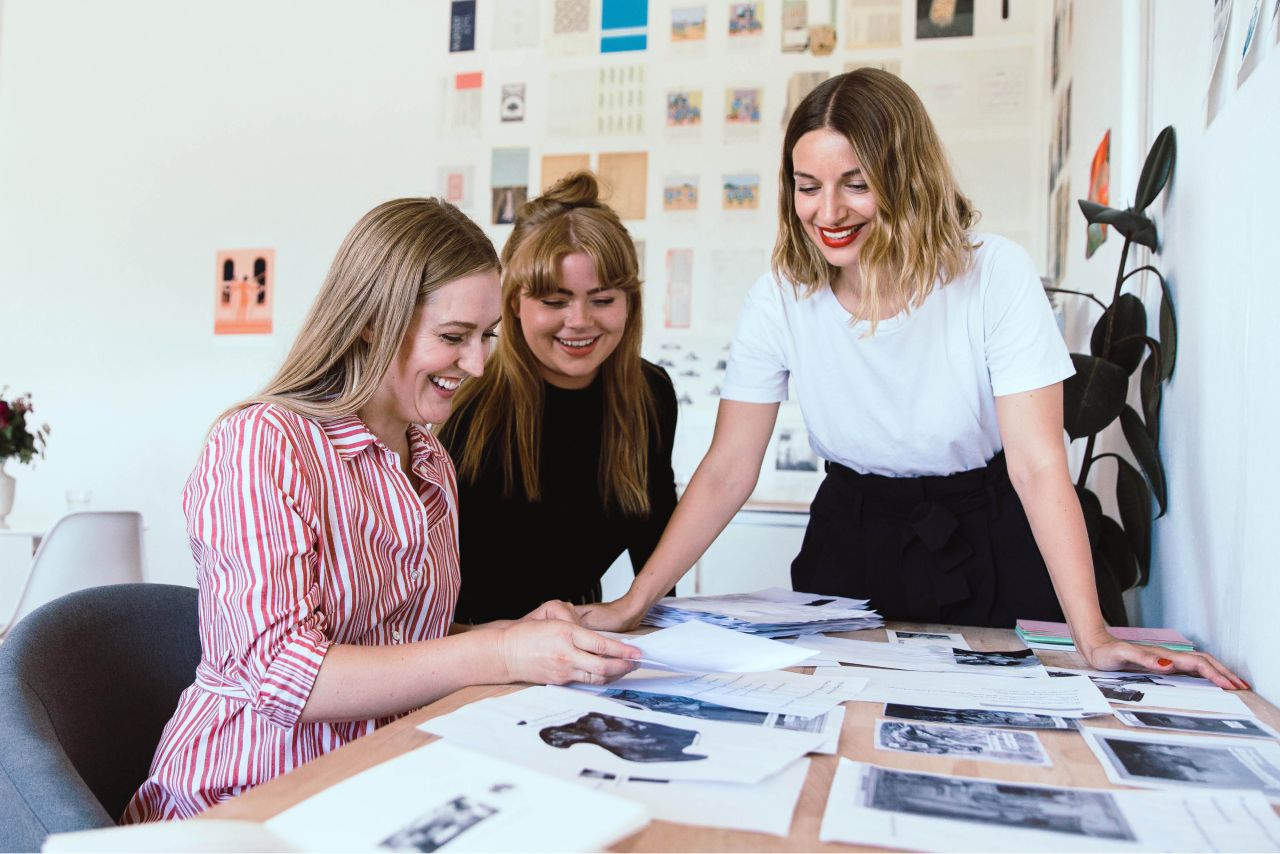
Lana Belton, Madeleine Berg, and Emma Skaaning of Studio Skulptur (Photo by Anthony Georgis)
They'd already found a few clients during their studies and felt like nothing was holding them back, so Studio Skulptur was born. The trio even established their own "rules for living and working" with kindness and generosity being amongst the many wonderful themes for a better work/life balance.
On the eve of International Women's Day, we chatted to Lana, Madeleine and Emma about their journey so far and delved into their own experiences of the design industry in Berlin and what they'd love to see change.
Tell us more about who you are and how you came to set up your studio
Madeleine: We met while studying communication design at the University of Applied Sciences Europe in Berlin and immediately hit it off. Emma and I started a studio as a side project and began to collaborate with Lana, too. When we graduated, we decided to go for it and launch a brand design studio. We had a few clients to get us started, so we found a space and gave it our all.
Emma: It was essential for us to do things our own way in this industry. We wanted to work on our terms, carve out our path, and be independent.
What are you doing differently?
Lana: Creating a positive, balanced work environment is tremendously important to us. We try to actively resist the "grind" culture that seems to be taking over this and every other industry. We love what we do, and we work very hard – but we strive to bring calm, positive energy to every project that we do.
Launching a brand is a stressful enough experience for our clients, and it's our job to make the whole process as smooth and enjoyable as possible. If we don't have enough space and time to think, we can't create our best work. We accomplish this in small ways like taking the time to cook lunch together, and more significant ways like dedicating every Friday to our personal projects.
Emma: Our team is small and tight-knit, so it's easier to nail our processes and the way we communicate. Comparing yourself to bigger agencies can feel daunting at first, but we've found that a small studio model allows us to provide exceptional value to our clients. We're able to develop strong, trusting relationships with our clients by working closely with them from the first meeting to final production. Being small also means we're flexible and agile, so clients get more for their money. When we need extra hands, we can collaborate with other creatives and assemble the perfect team for the job.
Madeleine: Carving out time for our creative practices helps us grow both personally and professionally. Making our own work gives us the space to experiment and push ourselves without the pressure of client expectations. We love learning new things and expanding our practice beyond graphic design. For example, last year, we all took up ceramics, which has been such an enriching experience. You can find some of our personal work at our online shop.
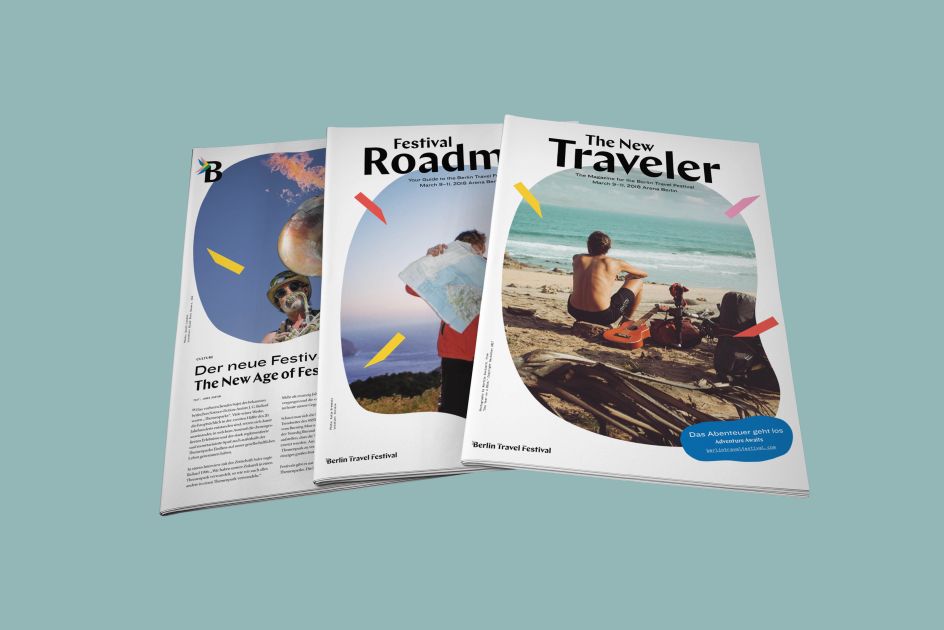
Publication design for the Berlin Travel Festival.
](https://www.creativeboom.com/upload/articles/87/87e1834ab896752d8bcf5aed656cf9ea0f1de8ca_944.jpg)
'Instructions for Drifting' playing cards from Shop Skulptur
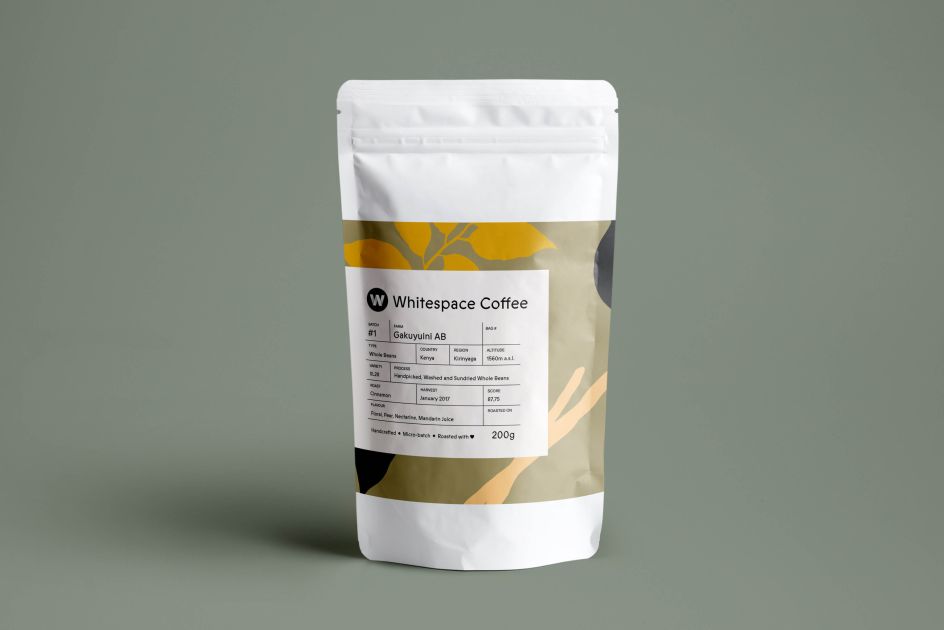
Packaging and brand identity design for Whitespace Coffee
People are pushing for more female leaders in the design industry, here in the UK. How are things in Germany?
Emma: We're facing the same challenges in Germany. The design industry is still very much a male-dominated space, especially at the top. That being said, there is a strong and supportive community of women designers here. One project we love, Notamuse, showcases women in design to combat the lack of visibility that female designers experience. It's so inspiring to meet other women who are changing the industry and pushing for better representation.
Lana: It's so important for young women entering the design scene to have female role models to look up to. We were lucky enough to develop a network of incredible women in the industry from an early stage in our careers. Our professor Emily Smith has been a big supporter of us from the start and introduced us to many other women doing incredible work for the design community.
What more do you want to see?
Madeleine: We would love to see more diversity in design and greater representation of all different viewpoints and experiences – especially in leadership roles. Seeing other women start their own studios was so inspiring for us, and we hope that we can do the same for other emerging designers.
Have you had any bad experiences as women?
Emma: For the most part, people have been very supportive of us and excited about what we're doing. Working in a male-dominated industry is difficult, and we've had moments where we feel we need to work harder to be taken seriously.
What else do you want to see change in the design industry?
Lana: Learning to value our work properly when we were just getting started was tough. It was a challenge to get comfortable with standing our ground and charging a fair price for what we do. We'd like to see more transparency around fair wages in design and fewer young designers working for exposure. Nobody tells their accountant that doing their taxes for free will be great for their portfolio.
Emma: We live in an image-saturated culture and trends circulate so quickly that everything starts to look the same. We'd love to see clients be brave and not be afraid to try something new and stand out.
](https://www.creativeboom.com/upload/articles/1f/1f06f81159b1fdf890c193295c02dd7cef3edcdb_944.jpg)
Illustrated art prints from Shop Skulptur
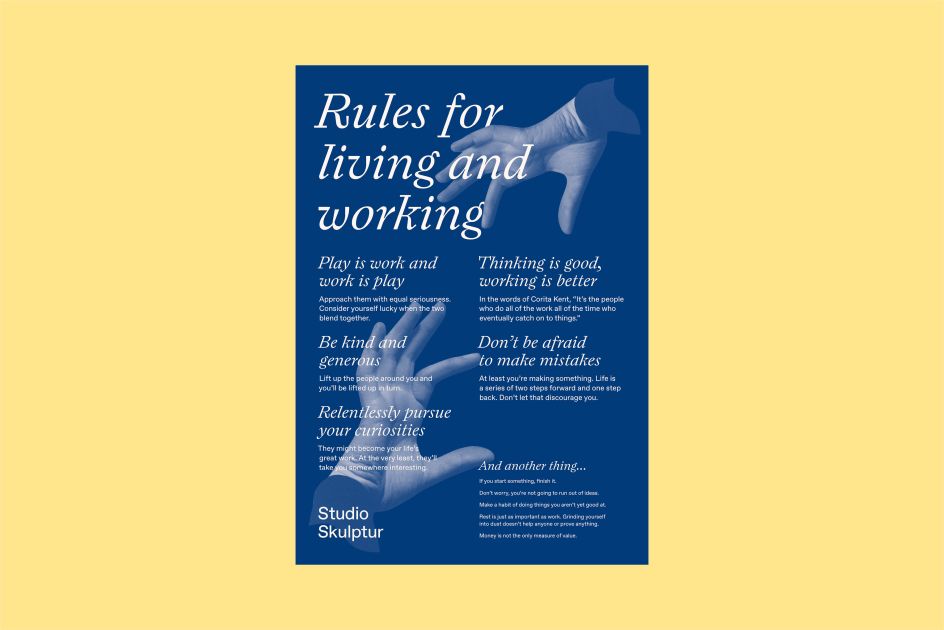
“Rules for living and working” poster reminds the trio what’s important
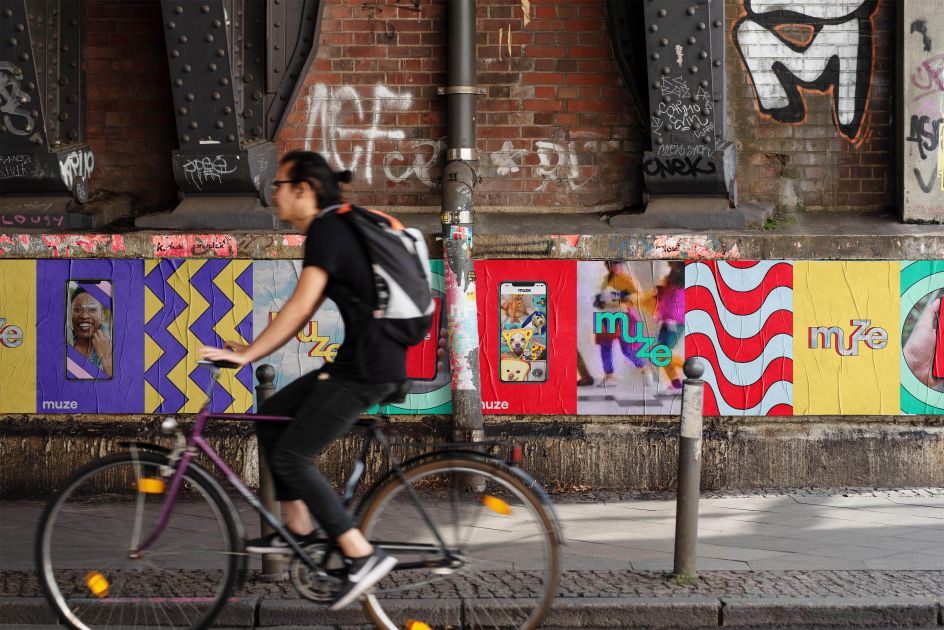
Brand identity design for Muze
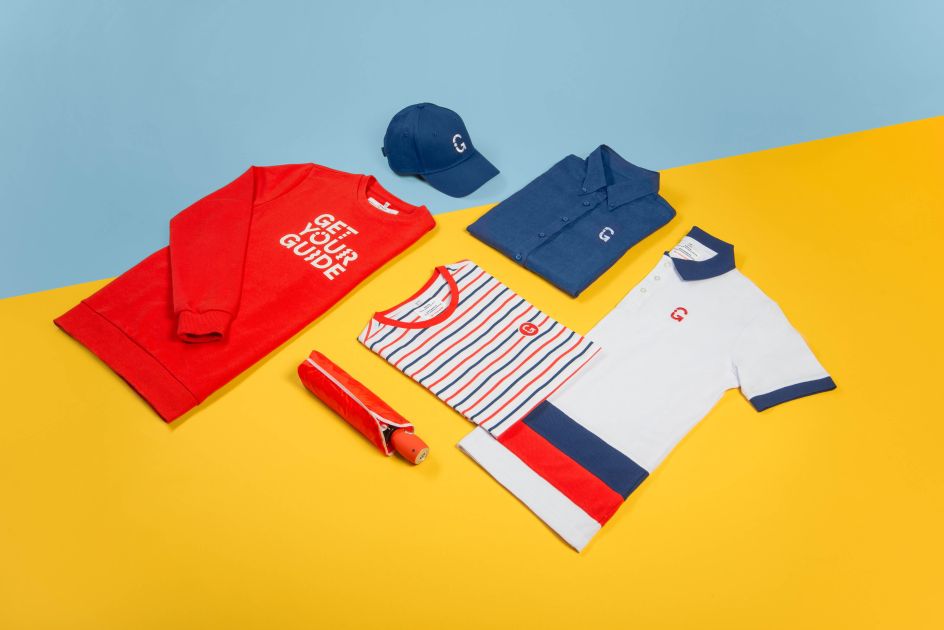
Uniform design for GetYourGuide (Photo by Katarzyna Skrzypek)
How's the creative scene in Berlin?
Madeleine: It's broad and international. There are so many different exhibitions, performances, and events to experience that finding inspiration is never a problem. We've met so many lovely people doing exciting work through the creative community here.
Lana: There are lots of different events and meetups to help newcomers make their way into the creative scene. For example, The Design Kids hosts monthly #TDKtuesdays meetups to help students and recent graduates connect with the design community. We've co-hosted with them before and will do so again very soon.
Talk us through a recent project, what made your approach unique?
Lana: Recently, we worked with a start-up in New York to build the brand identity of their creative messaging app. To immerse ourselves in their world and to get to know each other from a distance, we set up a group chat using their product. Our week-long conversation ranged from the insightful to the absurd and set us up for a productive and fun process.
Emma: The next step was the strategy. We hosted a workshop over video chat where we got to the heart of why they're doing what they do. Using these insights, we formulated a brand purpose statement for them – their reason for being that would guide us through the design phase and beyond.
Madeleine: Before we moved into design, we went through an extensive positioning phase to make sure the brand would appeal to a broad target audience but still stand out in a crowded market. Our client had a clear idea of who they were and what they stood for, which helped us find exactly the right look and feel for them through a series of mood boards and benchmark examples.
When it was finally time to design the identity, they were very open-minded and up for experimenting. Because we trusted each other and had developed a strong rapport, we were able to push ourselves to think differently and try new things. After refining the design, the last step was to build out brand guidelines that we filled with inspiring examples of where they could take the identity as they grow.
Emma: When we establish trust with our clients and work hard to understand what drives them, the process is enjoyable, and the results are incredible. It's so rewarding to present work to a client that gets them excited to push their business to the next level.
What advice would you give to others thinking of starting their own studio?
Emma: Go for it! Find partners who you trust and learn how to communicate clearly and respectfully. Running a business is like a marriage, so it's important that you like who you're working with, especially when times get tough. Start small and keep your costs low at the beginning to take the pressure off. This will make it easier to hunt out the work that inspires you. When you find a client that you love working with, focus on nurturing that relationship and providing excellent value.
Lana: It's crucial to spend time figuring out who you are and what you stand for from the beginning. If you're in the business of designing brands, you must know your own. A clear vision of where you want to go will help you through any rough patches you might face.
Madeleine: I think you should always have a passion project on the go. You want to start a studio because you love design and side projects can help you keep that love alive.
What challenges have you overcome and what wisdom can you share?
Madeleine: Choose what you work on and who you work with very carefully. Each project you work on opens the door to the next, so it's important to be mindful of where the path you're on is heading.
Emma: Learn how to say no. If someone doesn't value what you do, don't work with them. The same goes for people whose core values don't align with yours. Life is too short to work with people you don't like.
Lana: Every business has highs and lows. When things get hard, remind yourself why you started doing this and know that it will get better.




 by Tüpokompanii](https://www.creativeboom.com/upload/articles/58/58684538770fb5b428dc1882f7a732f153500153_732.jpg)


 using <a href="https://www.ohnotype.co/fonts/obviously" target="_blank">Obviously</a> by Oh No Type Co., Art Director, Brand & Creative—Spotify](https://www.creativeboom.com/upload/articles/6e/6ed31eddc26fa563f213fc76d6993dab9231ffe4_732.jpg)








